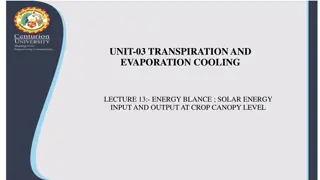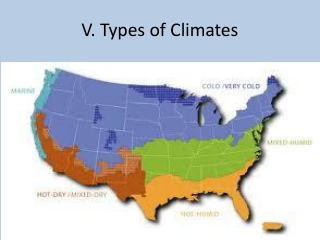Understanding Alluvial Fans: Formation, Characteristics, and Morphology
Alluvial fans are cone-shaped landforms formed by streams carrying sediments from mountains onto plains. They are prominent in arid to semi-arid regions and vary in size from a few meters to over 150 kilometers. The different zones of an alluvial fan, including the fan apex and distal fan, display distinct sediment characteristics. The fan formation process involves the deposition of coarse-grained material as the stream's gradient decreases. Understanding the morphology and processes of alluvial fans is crucial in geography studies.
Uploaded on Apr 20, 2024 | 4 Views
Understanding Alluvial Fans: Formation, Characteristics, and Morphology
PowerPoint presentation about 'Understanding Alluvial Fans: Formation, Characteristics, and Morphology'. This presentation describes the topic on Alluvial fans are cone-shaped landforms formed by streams carrying sediments from mountains onto plains. They are prominent in arid to semi-arid regions and vary in size from a few meters to over 150 kilometers. The different zones of an alluvial fan, including the fan apex and distal fan, display distinct sediment characteristics. The fan formation process involves the deposition of coarse-grained material as the stream's gradient decreases. Understanding the morphology and processes of alluvial fans is crucial in geography studies.. Download this presentation absolutely free.
Presentation Transcript
Fluvial Landforms: Terraces and Alluvial Fans DSE 3: UNIT 2 Section 3 Dr. Kaustuv Mukherjee Department of Geography Chandidas Mahavidyalaya
Alluvial Fans Definition and Concept An alluvial fan is a cone shaped body that forms where a stream flowing out of mountains debouches onto a plain. Alluvial fans are triangular-shaped deposits of water-transported material. Example: All along the interface between the Indo-Gangetic Plain and the Himalaya in India, Pakistan, Nepal and Bhutan the outermost, lowest Siwalik foothills are built of poorly consolidated sedimentary rocks that have eroded into a wide, continuous alluvial apron called Bhabar in Hindi and Nepali. Despite human overpopulation on the plains, this bhabar zone is highly malarial and has remained largely uninhabited.
Characteristics: Characteristics: Triangular In Shape Unconsolidated Sedimentary Deposit Larger And More Prominent In Arid To Semi-arid Regions. Formed In The Zone Of Break In Slope (Rapid Change Of Slope)
Size Alluvial fans can exist on a wide spectrum of size scale. For example, alluvial fans can be on the order of only a few meters at the base and can be as large as 150 kilometers with a slope of 1.5-25 degrees.. When numerous rivers/streams converge into a single plain, the fans can combine to form a continuous apron. In arid to semi-arid environments, this is referred to as a bajada and in humid climates the continuous fan apron is called a piedmont alluvial fan.
Morphology / Zones: Fan Apex Fan Surface Fan Toe Proximal Fan Medial Fan Distal Fan Proximal Fan is located just at the exit of the mountain range, coarse-grained massive gravel and blocks which contain relatively large portions of fine-grained matrix are highly prevalent. Slope varies from 10-15 degrees to 30 degrees. In the medial fan, the morphology depicts characteristics of frequent changes of inclined planar layered gravels, clast-supported and trough inclined stratified gravels, massive matrix-supported muddy gravels, and planar inclined sands. The dimensions of the alluvial fan deposit are often extremely wide in the distal areas. In the distal region, there is a prevalence of sands with planar and trough slanted stratification over clast-supported pebbles with trough slope stratification along with horizontally laminated silty sediments.
Process of Formation: As a stream's gradient decreases, it drops coarse-grained material. It makes swagger of the channel and forces it to change direction and gradually build up a slightly mounded or shallow conical fan shape. The deposits are usually poorly sorted. This fan shape can also be explained with a thermodynamic justification: the system of sediment introduced at the apex of the fan will tend to a state which minimizes the sum of the transport energy involved in moving the sediment and the gravitational potential of material in the fan. There will be iso-transport energy lines forming concentric arcs about the discharge point at the apex of the fan. Thus the material will tend to be deposited equally about these lines, forming the characteristic fan shape. These alluvial fans typically form in elevated or even mountainous regions where there is a rapid change in slope from a high to low gradient. The river or stream carrying the sediment flows at a relatively high velocity due to the high slope angle, which is why coarse material is able to remain in the flow. When the slope decreases rapidly into a relatively planar area or plateau, the stream loses the energy it needs to move its sediment. Deposition subsequently occurs and the sediment ultimately spreads out, creating an alluvial fan.
further reading continues. Thank You

















































